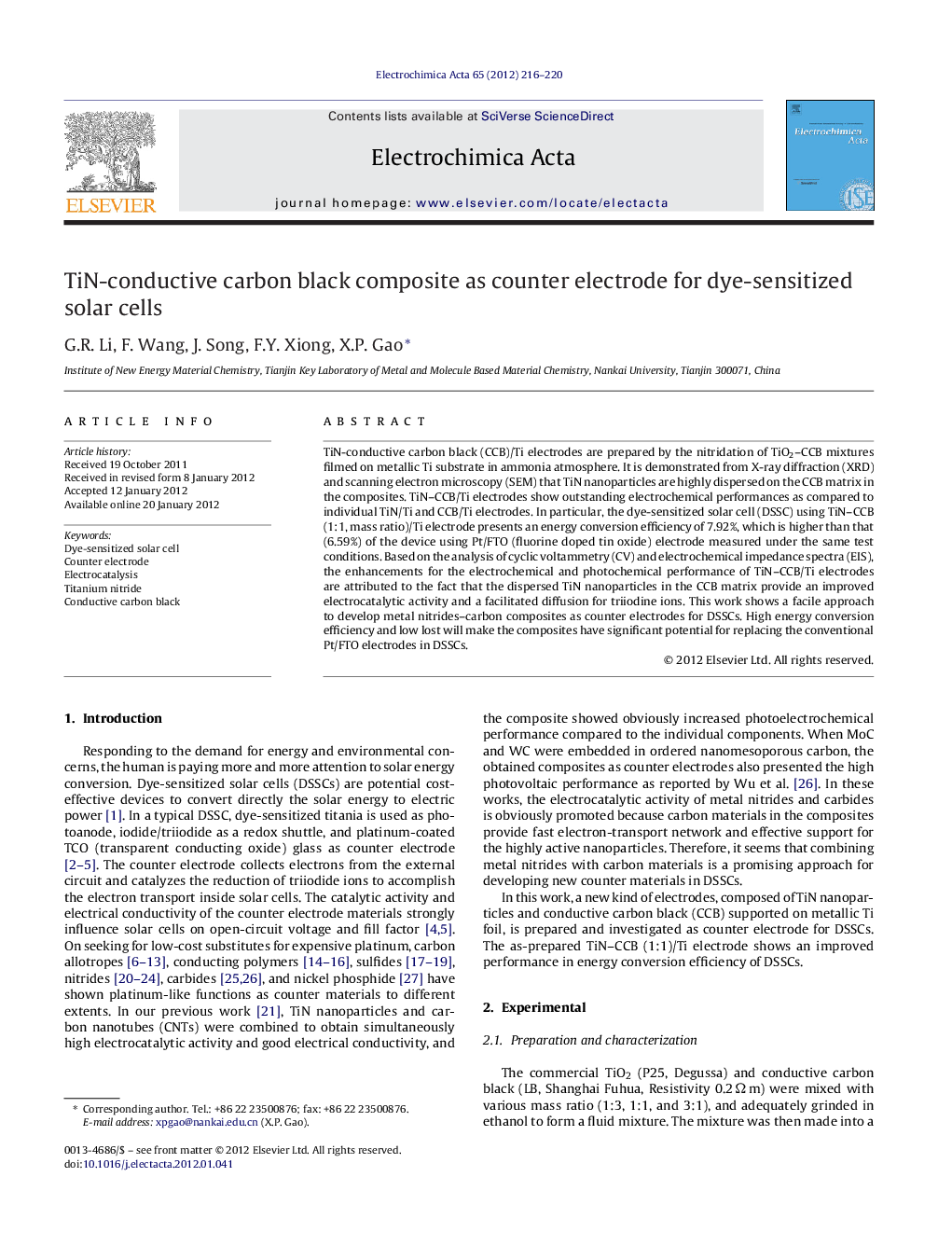| Article ID | Journal | Published Year | Pages | File Type |
|---|---|---|---|---|
| 188861 | Electrochimica Acta | 2012 | 5 Pages |
TiN-conductive carbon black (CCB)/Ti electrodes are prepared by the nitridation of TiO2–CCB mixtures filmed on metallic Ti substrate in ammonia atmosphere. It is demonstrated from X-ray diffraction (XRD) and scanning electron microscopy (SEM) that TiN nanoparticles are highly dispersed on the CCB matrix in the composites. TiN–CCB/Ti electrodes show outstanding electrochemical performances as compared to individual TiN/Ti and CCB/Ti electrodes. In particular, the dye-sensitized solar cell (DSSC) using TiN–CCB (1:1, mass ratio)/Ti electrode presents an energy conversion efficiency of 7.92%, which is higher than that (6.59%) of the device using Pt/FTO (fluorine doped tin oxide) electrode measured under the same test conditions. Based on the analysis of cyclic voltammetry (CV) and electrochemical impedance spectra (EIS), the enhancements for the electrochemical and photochemical performance of TiN–CCB/Ti electrodes are attributed to the fact that the dispersed TiN nanoparticles in the CCB matrix provide an improved electrocatalytic activity and a facilitated diffusion for triiodine ions. This work shows a facile approach to develop metal nitrides–carbon composites as counter electrodes for DSSCs. High energy conversion efficiency and low lost will make the composites have significant potential for replacing the conventional Pt/FTO electrodes in DSSCs.
► The TiN nanoparticles are highly dispersed on conductive carbon black matrix (CCB). ► The well dispersion of TiN nanoparticles can improve electrochemical performance. ► The TiN/CCB shows a high photovoltaic performance with high conversion efficiency.
